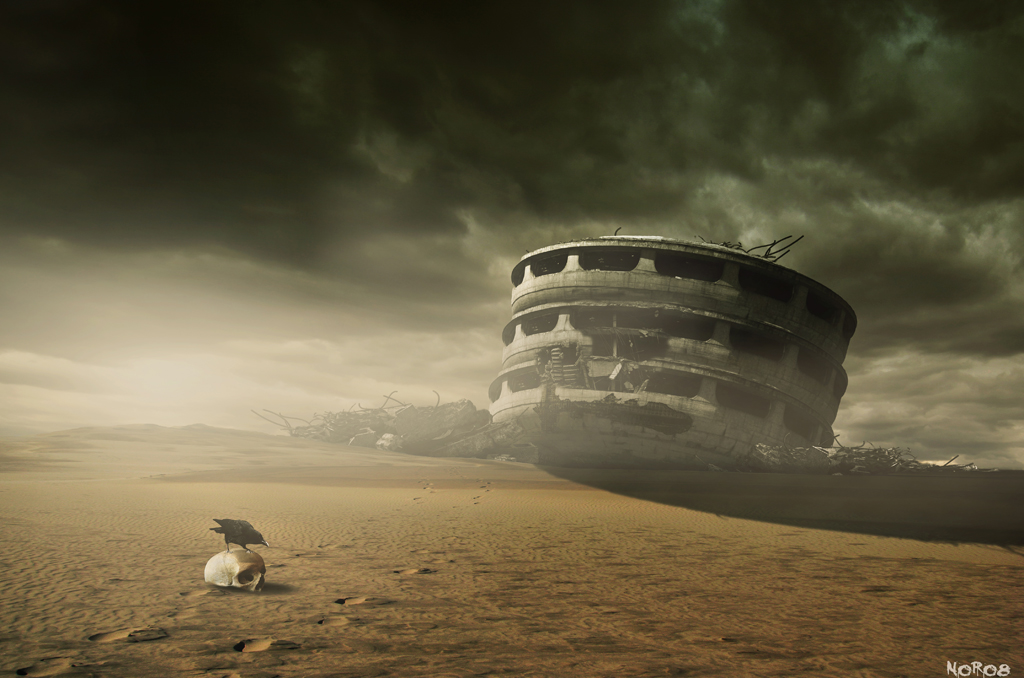A Hundred Millennia From Now
Jun. 3rd, 2023 10:57 pm I need a little help from my readers for a fiction project in the early conceptual changes.
I need a little help from my readers for a fiction project in the early conceptual changes. I'm trying to find accurate information about the enduring legacies of modern industrial civilization. Assume that our civilization circles through the normal cycle of decline and fall. Assume that ordinary history continues for the next hundred thousand years or so. Assume that ordinary ecological and climatic cycles, perturbed by our current mess, return to normal in a reasonable period of time and persist for that same very long period. What traces will remain of the earth's first global technic civilization?
What I would like, if any of my readers can point me to this, are some easily accessible written sources by geologists and other people literate in the earth sciences which address this. Yes, I'm beginning to draft a story set in the far future; no, it's not going to be the fake future of so much bad science fiction, in which today's mental and cultural habits remain frozen in place across the ages while technotrinkets lurch into ever more elaborately predictable forms. We never went to the stars, nor did alien space bats ever come to visit us; life has continued to evolve; today's industrial society, the legendary First Technate, is a dim presence long since fallen out of mythology, and recalled only in fragmentary surviving records from less prodigiously ancient societies.
Oh, and there's a new ice age on, though the glaciers are slowly beginning to retreat. Fun times!
If any of you have scientifically based sources to suggest for the long-term destinies of our mines and freeways, dams and tunnels, landfills and miscellaneous waste, I'm all ears.
(no subject)
Date: 2023-06-04 07:24 pm (UTC)(no subject)
Date: 2023-06-05 07:04 am (UTC)https://news.usni.org/2023/05/25/u-k-royal-navy-distressed-and-concerned-by-illegal-chinese-salvage-of-wwii-wrecks
What might survive 100,000 years as an ice age was just ending are books and scrolls on low-acid papers, sealed into pots like the Dead Sea Scrolls. Inside caves in the dry mid-latitudes such as Patagonia and North America. Also in super dry places bones, tendons, etc. such as the remains of Giant Sloths which were wiped out as the last big ice age started. https://www.sdnhm.org/exhibitions/fossil-mysteries/fossil-field-guide-a-z/giant-sloth/
FWIW: the place in North America with the least cloud cover 365 days/year is the waist of the Baja Peninsula of Mexico used by U.S. NOAA to geo-rectify wobbling geostationary weather satellites. A Mid-latitudes dry area. Home to a boojum forest like bunya bunya forest in Australia and the Andes which predate the last ice age. There are near that waist some small caves high on canyon walls in the mountains just north of San Ignacio where IIRC Giant Sloth bones and poop have been found, and lots of cave paintings by people who "came before" per the stories from the people first encountered there in the 1600's by Europeans.
https://craigkcollins.medium.com/bajas-great-mural-rock-art-vastly-older-than-previously-believed-2b328cefbcf9
W.R.
(no subject)
Date: 2023-06-06 01:27 am (UTC)"The people who drew that animal could only have seen it more than 40,000 years ago,"
Stone carvings in some rock in Australia is estimated to last for 50 to 60 thousand years:
https://www.abc.net.au/science/articles/2014/10/09/4102916.htm
But that is pure rock.
When it comes to the future, after we're all long gone, perhaps tunnels carved into solid rock may feature art like that.
I imagine most concrete structures/tunnels will collapse though. The reinforcing steel used in modern concrete construction rusts if gets wet causing 'concrete cancer', although maybe concrete structures in very dry and low salt areas might fare better.
There is a one-time NASA/Australia deep space tracking facility in a mountainous national park near me that was used to relay messages from the lunar landings. All of the above ground structures are now gone. All that remains is the levelled mountaintop site, concrete slabs, and some steel rails and so forth for the dishes once stood.
I broke into abandoned tracking station facilities before they were demolished once as a juvenile delinquent (I can't remember which ones, there's more than one around here and I was wasted at the time). I recall though that one of my mates made off with a souvenir of some electrical component festooned with radiation warnings - not the sharpest tool in the shed that bloke. But it highlights the risk of ignorance coupled with radioactive items that may be left behind from a one-time civilization.
In a way, collapse already happened up there at the space communications sites. No more lunar landings = no more deep space communications, so all that's left are some slabs here and there and Australia's own miniature version of Machu Picchu :P
There'd be some plumbing buried there I guess. And I saw some structure and pipes left near a creek, which I presume once fed the facility, or maybe dumped its waste.
The roads and associated earthworks to the facility will probably be all that's left in time. Maybe the odd bit of metal. It's not very salty around here, so metals that might ordinarily rust away to nothing may be able to last longer around here.
The Ninth Mouse